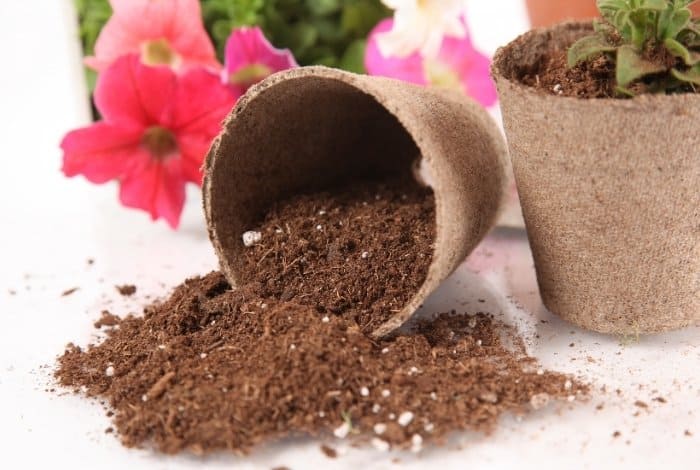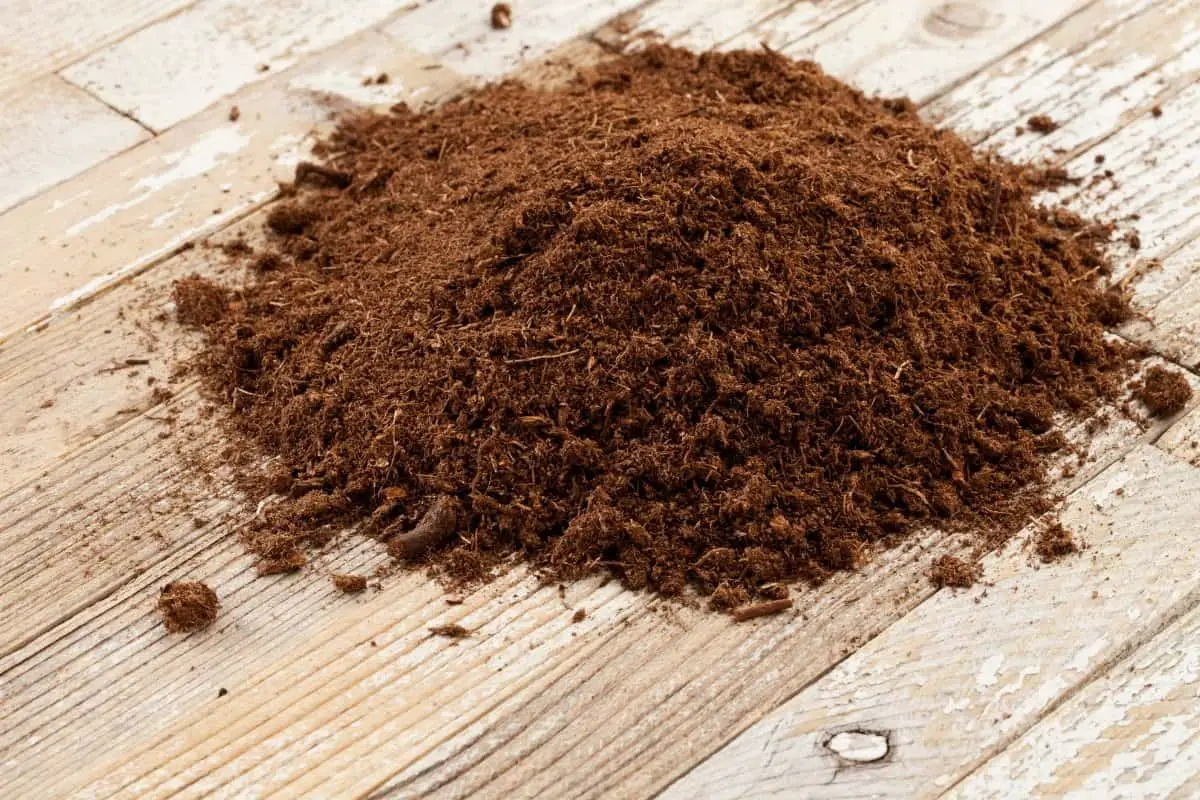Last Updated on January 17, 2022 by
One common organic matter gardeners make use of is sphagnum peat moss. But what is peat moss? Let’s discuss some facts about peat moss and how to use it in your garden.
Some Fact about What is Peat Moss
Firstly, you need to know the term ‘peat’ and ‘peat mosses are slightly different in meaning.
Peat: peat is formed from decayed organic matter soaked or submerged under bogs. It comes from various materials.
Peat moss: peat moss is majorly made from sphagnum moss.

Sphagnum Peat Moss
Sphagnum peat moss is composed of accumulated dark brown fibrous biomatter. It comes from a wetland. They are the remains of the dead materials of wild mosses that have been piled up in a peat bog over a thousand years.
Peat moss is from the genus Sphagnum. So what differentiates peat moss from the regular compost matter is the moss which it is made up of.
The process of decomposition in peat moss is very slow and it occurs anaerobically (without air). However, unlike most organic matter, peat moss is not a renewable resource since the decomposition process is very slow.
Read more about Best cover crop for clay soil
What is Peat Moss Used for?
Now that you have an idea of what peat moss is, we can now look into what they are used for. Peat moss is majorly used for soil amendments and soil components. Here are some of the uses or benefits of peat moss:
- Water and nutrient retention: peat moss has the ability to hold water well. Therefore, you can use it for loose soil such as sandy soil which will help its water-holding ability. Peat mosses can also help sandy soil retain nutrients thus, reducing leaching.
- Helps with soil compaction: also, when mixed with clay soil, it can help clay soil reduce its compaction. It will lighten or soften the consistency of the soil thereby making air and water to pass through easily.
- Acidic pH: peat moss is great for acid-loving plants. e.g. camellias and blueberries.
- Medium for planting: peat moss serves as a good transplanting medium for planting seedlings, or growing in containers. It is used as a constituent, mixed with other components that make up a fraction of the mixed volume.
- Sterile medium for vulnerable plants: peat moss is free of microorganisms such as bacteria or fungi. They are also free from weed seeds. Therefore, it is a healthy and good choice for seedlings or plants that are just starting up.
- Lawn improvement: another use for peat moss is as a soil mix for your lawn. Just like growing containers or trees transplanted, peat moss will help in water regulation, aeration, and nutrient holding capacity. It basically promotes the growth of healthy grass for your lawn.
How To Use Peat Moss In Vegetable Garden
To enjoy the benefits of peat moss in your garden, mix it evenly into the soil about 12 inches deep. Consider adding compost to the soil along with the peat moss to add the nutrients the plant needs.
If what you are looking for is to use peat moss as a soil amendment, mix 2 parts of soil and one part of peat moss.
As an organic Soil Conditioner: Hoffman Canadian Sphagnum Peat Moss
As A Seed Starter: Root Naturally Peat Pellets
For new turf and lawn maintenance: Premier Horticulture Pro Moss
For lining hanging baskets and as a decorative soil covering: Sun Bulb Company Inc Better-Gro Sphagnum Moss
Summary
So here is the summary of what peat moss is:
- Peat moss is composed of accumulated dark spongy materials.
- The decomposition process is slow and it takes place without air.
- It is made up of sphagnum moss.
- Peat moss helps soften compact soil.
- It is capable of holding and regulating water
- It also helps with nutrient retention.
FAQs
How do you use sphagnum moss in soil mix?
In order to adjust the pH levels of soil and make it more nutrient-rich, one must add sphagnum moss. This is because sphagnum moss can release acidic compounds called humic acid when it dries out in the air. Humic acid helps on making the soil acidic and this helps plants grow well in that area.
When you plant a tree, or any other plant, you must first choose a location that has good drainage and contains fertile, mostly fertile soil with pH levels between 5.5 to 6.5. The most effective way to do this is by adding sphagnum moss into the water reservoir of your pot so that when it dries out in the air it releases its acidic compound, humic acid which will make your soil more nutrient-rich.
Can sphagnum moss be reused?
The answer is yes, sphagnum moss can be reused and re-harvested in most cases. The quality of sphagnum moss decreases with time and it’s recommended to use new sphagnum moss every three years.
The plant also needs to be dried out before reusing it. This is important because wet sphagnum moss will become a breeding ground for mold and other pathogens that can make the plant unhealthy.
Sphagnum moss is a good material for creating all kinds of things like soil, potting mix, insulation, animal bedding and more!
Can I keep sphagnum moss in water?
Sphagnum moss is often used for growing plants and creating a habitat for animals. It can also be used as a soil amendment in gardens, greenhouses, and terrariums.
Here are some of the ways that you can keep sphagnum moss:
-In a container with water (the water should be clean and have good drainage)
-If it's dried out, you can put it in a pot with moist potting soil or vermiculite
-If you're keeping sphagnum moss outside, make sure to put some climate control equipment like heating mats or seedling heaters
Can I use sphagnum peat moss for all plants?
Sphagnum peat moss is a great option for the garden because it helps suppress weeds and provides nutrients for the soil. It can be used in areas with poor drainage, but it’s not suitable for use with plants that prefer more moisture.
Sphagnum peat moss has a unique ability to hold up to 10 times its own weight in water. It's also one of the best materials for retaining and recycling water.
It also has unique properties that help in building up organic material on top of the soil surface. However, some plants don't do well with sphagnum mixtures because they're too light or too acidic.
There are many plants that sphagnum peat moss cannot be used with, such as orchids, shasta daisies, and azaleas. However, it can be used with these plants as well as other plants as long as they have the right conditions for growth.
Should I add peat moss to my vegetable garden?
Peat moss is commonly used in gardening for many different purposes. It can provide needed nutrients, moisture retention, and temperature control.
Peat moss is a type of organic soil conditioner that can be used to improve the content and structure of your garden soil. It's an option for improving the quality of your soil without using chemicals or heavy fertilizers, but it can take time for it to take effect.

Eunice is a gardener who loves to play in the dirt. She starts her day early in the morning, watering her plants and tending to her garden. She loves the smell of freshly cut grass and the feeling of sunshine on her back as she works. She‘s a master at creating beautiful flower arrangements and can often be found humming a tune as she tends to her plants. When she‘s not gardening, she loves to read books about nature and share her knowledge with others. Eunice loves gardening so much that she‘s even been known to talk to her plants!



